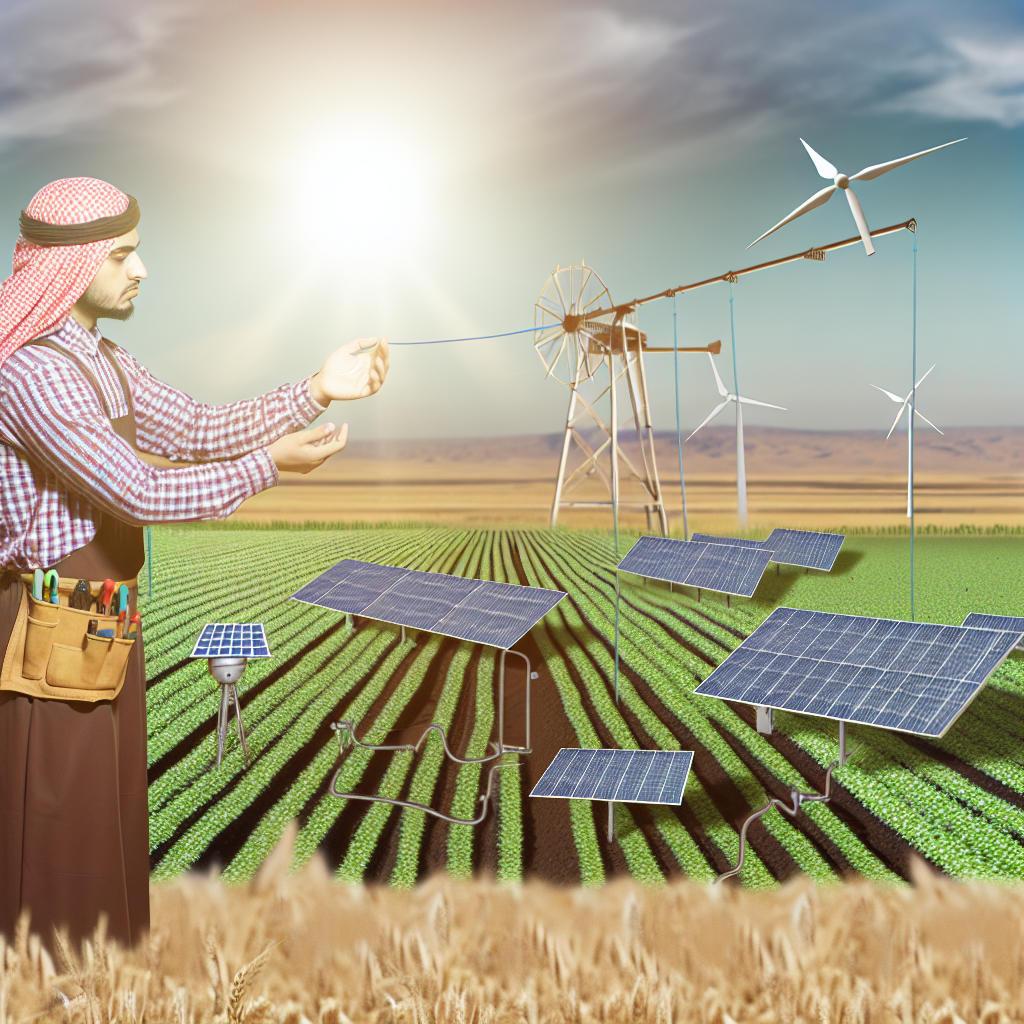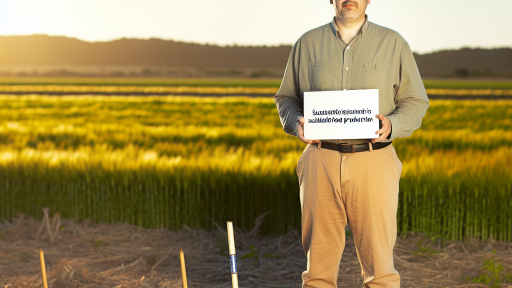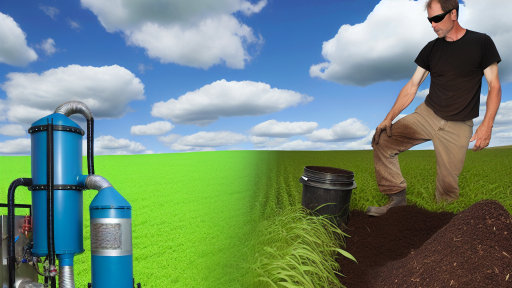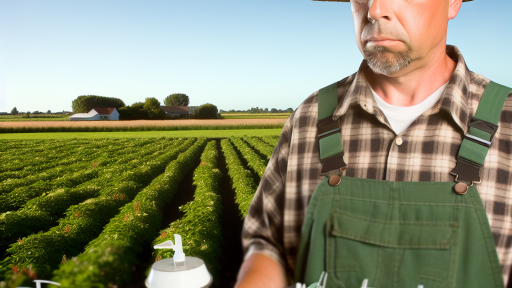Introduction to Sustainable Farming and Its Importance
Sustainable farming practices are essential for environmental preservation.
These techniques help maintain ecological balance and protect natural resources.
They play a crucial role in addressing climate change issues.
Additionally, sustainable farming supports food security for future generations.
Farmers adopt these practices to enhance soil health and biodiversity.
The Role of Sustainable Farming in the Environment
Sustainable farming reduces reliance on synthetic fertilizers and pesticides.
Instead, it emphasizes organic alternatives and integrated pest management.
This approach minimizes pollution and conserves water resources effectively.
Economic Benefits of Sustainable Farming
Farmers investing in sustainable methods often see long-term cost savings.
They typically experience increased demand for organic products.
Additionally, sustainable practices can lead to higher crop yields over time.
Social Implications of Sustainable Farming
Sustainable farming fosters community engagement and local economies.
It encourages consumers to support local, eco-friendly products.
This creates jobs and strengthens relationships within communities.
A Path Forward
The shift towards sustainable farming is not just beneficial; it is necessary.
Transform Your Agribusiness
Unlock your farm's potential with expert advice tailored to your needs. Get actionable steps that drive real results.
Get StartedEmbracing these practices can mitigate climate impacts and enhance resilience.
Ultimately, sustainable farming paves the way for a healthy future.
Crop Rotation: Enhancing Soil Health and Biodiversity
Definition of Crop Rotation
Crop rotation involves changing the types of crops grown in a specific area.
This method prevents the depletion of soil nutrients.
Moreover, it disrupts the life cycles of pests and diseases.
Benefits of Crop Rotation
Firstly, it enhances soil health by improving its structure.
This technique increases organic matter in the soil.
Consequently, it promotes beneficial microbial activity.
Impacts on Biodiversity
Crop rotation significantly boosts biodiversity in agricultural systems.
It enriches habitats for various organisms.
Additionally, it supports a wider variety of plant species.
Examples of Effective Crop Rotations
An example includes alternating legumes with cereal crops.
Legumes fix nitrogen, enriching the soil for future crops.
Another approach is rotating deep-rooted plants with shallow-rooted ones.
Implementing Crop Rotation
Farmers should design crop rotation plans tailored to their fields.
They must consider soil types and nutrient requirements.
Regular assessment of soil health is crucial for effectiveness.
Permaculture: Designing Sustainable Agricultural Ecosystems
What is Permaculture?
Permaculture is an innovative way to design agricultural systems.
It integrates land, resources, people, and the environment.
This approach aims to create self-sustaining ecosystems.
Core Principles of Permaculture
Permaculture is built on several core principles.
- Observe and interact with nature.
- Catch and store energy for future use.
- Apply self-regulation and accept feedback.
- Use and value renewable resources.
- Produce no waste by designing for reuse.
Benefits of Permaculture
Permaculture offers numerous environmental benefits.
It promotes biodiversity through diverse planting techniques.
This method enhances soil health and water retention.
Showcase Your Farming Business
Publish your professional farming services profile on our blog for a one-time fee of $200 and reach a dedicated audience of farmers and agribusiness owners.
Publish Your ProfileAdditionally, permaculture practices help reduce carbon footprints.
Implementing Permaculture Techniques
Many techniques can help gardeners implement permaculture.
- Creating a forest garden for diverse plants.
- Utilizing companion planting for better yields.
- Installing rainwater harvesting systems.
- Building swales to manage water runoff.
These strategies enhance ecological balance and efficiency.
Case Studies in Permaculture
Successful permaculture projects exist around the globe.
Many of these projects demonstrate its potential in various climates.
They showcase how communities have increased sustainability.
By observing these successful cases, others can learn valuable lessons.
Discover More: Eco-Friendly Farming: How to Cut Costs and Save the Planet
Agroforestry: Integrating Trees for Enhanced Crop Production and Carbon Sequestration
What is Agroforestry?
Agroforestry combines agriculture and forestry practices.
This approach integrates trees, crops, and livestock on the same land.
It leverages the benefits of both ecosystems for sustainability.
Benefits of Agroforestry
Agroforestry enhances biodiversity in agricultural landscapes.
It improves soil health through increased organic matter.
Additionally, trees provide shade and reduce water evaporation.
Moreover, this technique aids in carbon sequestration efforts.
Improved Crop Yields
Integrating trees can lead to better crop production.
Trees provide shelter from harsh winds and create microclimates.
These conditions promote healthier crop growth and resilience.
Carbon Sequestration
Agroforestry practices capture atmospheric CO2 effectively.
Trees absorb carbon during photosynthesis, storing it in biomass.
This process mitigates climate change impacts significantly.
Implementing Agroforestry
Farmers should assess their land for agroforestry viability.
- Identify tree species suitable for the local climate.
- Plan the layout to maximize land use efficiency.
- Integrate trees gradually alongside existing crops.
Successful implementation requires continuous education and research.
Case Studies and Success Stories
Many farms successfully use agroforestry techniques globally.
For example, smallholder farmers in Africa practice alley cropping.
This method involves planting rows of trees with crops in between.
Likewise, mixed crop-livestock systems in Latin America show promising results.
Challenges and Considerations
Despite benefits, agroforestry faces challenges.
Farmers may struggle with the initial investment costs.
Moreover, knowledge gaps in practices can hinder success.
However, support from organizations can guide implementation effectively.
You Might Also Like: The Rise of Zero-Waste Farms: A Blueprint for Sustainability
Conservation Tillage: Reducing Soil Erosion and Improving Water Retention
What is Conservation Tillage?
Conservation tillage involves minimizing soil disturbance during planting.
It helps maintain soil structure and health over time.
Farmers use various methods, such as no-till and reduced-tillage practices.
Benefits of Conservation Tillage
This technique significantly reduces soil erosion.
Less erosion leads to more fertile soil and improved crop yields.
Moreover, it enhances water retention in the soil.
That means crops can access moisture during dry periods.
Environmental Advantages
Conservation tillage mitigates environmental impacts from farming.
Showcase Your Farming Business
Publish your professional farming services profile on our blog for a one-time fee of $200 and reach a dedicated audience of farmers and agribusiness owners.
Publish Your ProfileIt decreases the runoff of pesticides and fertilizers into waterways.
This practice also promotes biodiversity in the soil ecosystem.
Economic Gains
Adopting conservation tillage can lower production costs for farmers.
It minimizes the need for expensive equipment and fuel associated with traditional tillage.
Ultimately, this leads to increased profit margins for farmers.
Implementing Conservation Tillage
Farmers can start by evaluating their existing tillage methods.
They should consider transitioning gradually to conservation practices.
Testing soil health can provide valuable insights for this transition.
Tools and Techniques
Various tools help facilitate conservation tillage.
- No-till drills allow for direct planting into undisturbed soil.
- Cover crops protect soil during off-seasons.
- Mulching techniques provide a protective layer for moisture retention.
Challenges and Considerations
While beneficial, conservation tillage requires careful management.
Farmers must monitor soil health consistently.
Additionally, they should adapt their methods to specific crop needs.
Uncover the Details: Why Crop Rotation Is Crucial for Sustainable Soil Health
Organic Farming: Promoting Biodiversity and Eliminating Synthetic Chemicals
Definition of Organic Farming
Organic farming emphasizes the use of natural processes in agriculture.
This method avoids synthetic fertilizers and pesticides.
Instead, it supports sustainable practices to enhance soil health.
Benefits of Organic Farming
Organic farming promotes biodiversity within agricultural ecosystems.
It encourages the growth of various plant and animal species.
Moreover, it leads to healthier soil by enhancing microbial activity.
Reducing Environmental Impact
By eliminating synthetic chemicals, organic farming protects waterways.
It reduces pollution and promotes cleaner ecosystems.
This method also mitigates soil degradation, preserving land for future use.
Techniques Used in Organic Farming
Crop rotation is a fundamental technique in organic farming.
This practice prevents pest buildup and enhances soil fertility.
Additionally, cover cropping improves soil structure and health.
Natural Pest Management
Organic farms use beneficial insects to control pests naturally.
This approach reduces reliance on chemical pesticides.
Farmers also employ companion planting to deter unwanted species.
Market Demand for Organic Products
There is a growing demand for organic foods among consumers.
People are increasingly prioritizing health and environmental impact.
Organic certification ensures transparency in farming practices.
Economic Viability
Organic farming can be financially rewarding for farmers.
Higher prices for organic products increase potential profits.
Furthermore, organic farming systems often require fewer inputs, reducing costs.
Find Out More: 8 Sustainable Farming Hacks You Need to Know Now

Case Studies of Successful Sustainable Farming Techniques Worldwide
Agroforestry in Brazil
Agroforestry combines agriculture and forestry practices.
This method enhances biodiversity and soil quality.
Farmers in Brazil have adopted this technique widely.
They use native tree species alongside cash crops.
Consequently, they improve their yields and ecosystems.
Showcase Your Farming Business
Publish your professional farming services profile on our blog for a one-time fee of $200 and reach a dedicated audience of farmers and agribusiness owners.
Publish Your ProfilePermaculture in Australia
Permaculture focuses on sustainable land use design.
This practice integrates agriculture with natural ecosystems.
In Australia, permaculture gardens thrive in urban settings.
They provide food and support local wildlife populations.
Moreover, they promote healthy soil and water conservation.
No-Till Farming in the United States
No-till farming minimizes soil disturbance during planting.
This technique preserves soil structure and fertility.
Farmers across the United States have embraced this method.
They observe reduced erosion and increased organic matter.
As a result, crop yields have improved significantly.
Irrigation Management in India
Efficient irrigation management conserves valuable water resources.
In India, farmers utilize drip irrigation systems effectively.
This technique drastically reduces water waste.
Farmers can grow crops in arid regions successfully.
In turn, food security improves for local communities.
Organic Farming in Europe
Organic farming avoids synthetic fertilizers and pesticides.
Farmers in various European countries have adopted this model.
They improve soil health through crop rotations.
Additionally, organic produce garners premium market prices.
This approach promotes overall environmental wellness.
Challenges and Solutions in Implementing Sustainable Farming Practices
Identifying Key Challenges
Farmers often face significant barriers when adopting sustainable practices.
These challenges may include high initial costs and lack of resources.
Moreover, some farmers experience a lack of knowledge about new techniques.
Changing market demands can also create uncertainty for producers.
Weather variability poses additional risks to sustainable farming efforts.
Addressing Financial Constraints
Financial barriers can hinder the implementation of sustainable practices.
Farmers can seek grants and subsidies to alleviate these costs.
Cooperatives can help reduce expenses by pooling resources.
Investing in technology may lead to long-term savings and efficiency.
Finally, creating direct market connections can maximize profits.
Enhancing Knowledge and Training
Education plays a crucial role in overcoming implementation challenges.
Workshops can equip farmers with essential sustainable farming skills.
Universities can partner with farms for research-based training programs.
Online resources and community forums can also provide support.
Mentorship programs help bridge knowledge gaps between experienced farmers and novices.
Mitigating Market Risk
Transitioning to sustainable practices may cause market uncertainties.
Diversity in crop production can reduce dependency on a single income source.
Farmers can engage in community-supported agriculture for stability.
Adopting organic certifications can also open up new market opportunities.
Using marketing strategies that emphasize sustainability can attract consumers.
Showcase Your Farming Business
Publish your professional farming services profile on our blog for a one-time fee of $200 and reach a dedicated audience of farmers and agribusiness owners.
Publish Your ProfileAdapting to Climate Variability
Climate change impacts pose significant challenges for farmers.
Implementing adaptive practices can help mitigate these risks.
Crop rotation and cover cropping enhance soil resilience.
Water management techniques, like drip irrigation, improve efficiency.
Finally, utilizing climate data can inform better decision-making.
Future Trends in Sustainable Agriculture and Technology Innovations
Integration of Technology
The agricultural sector increasingly embraces innovative technologies.
Farmers utilize AI to optimize yield and reduce waste.
Additionally, drones monitor crop health in real time.
Moreover, blockchain enhances supply chain transparency.
Regenerative Farming Practices
Regenerative farming focuses on restoring ecosystem health.
This approach enriches soil fertility and biodiversity.
Furthermore, it captures carbon, addressing climate change.
Farmers practicing this see improved long-term sustainability.
Sustainable Water Management
Efficient water use is critical in modern agriculture.
Technologies like drip irrigation conserve precious resources.
Additionally, rainwater harvesting systems reduce dependency on groundwater.
Such innovations promote resilience in drought-prone areas.
Organic and Permaculture Methods
Organic farming reduces chemical inputs and enhances soil health.
Permaculture design principles foster sustainable ecosystems.
Both practices attract consumers seeking eco-friendly options.
These methods also increase local food security and biodiversity.
Collaboration and Education
Farmers benefit from collaborative learning and knowledge sharing.
Workshops and online platforms connect them with experts.
Additionally, educational programs promote sustainable practices.
This ongoing support empowers farmers to adopt new techniques.
Additional Resources
Chapter 5 : Food Security — Special Report on Climate Change and …
The Three Sisters of Indigenous American Agriculture | National …




